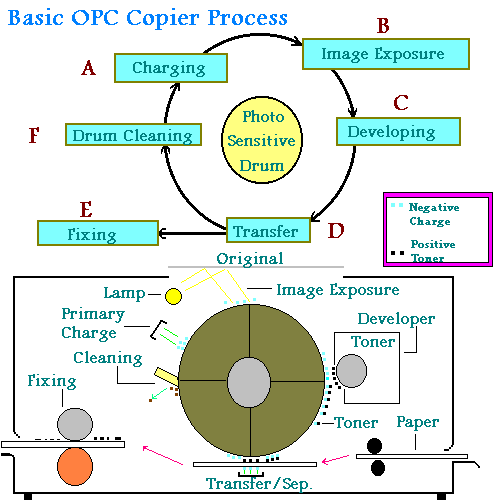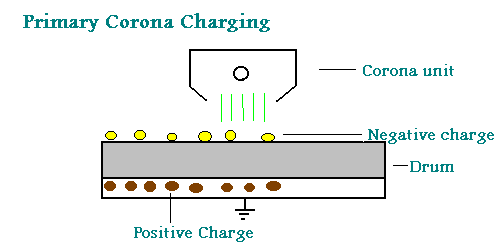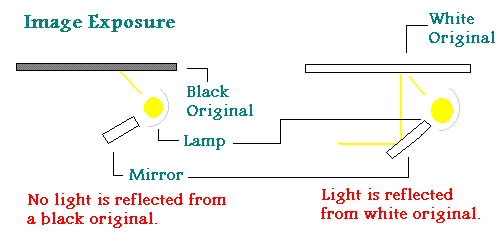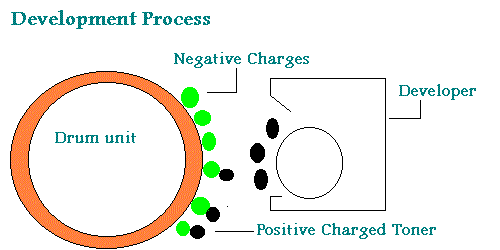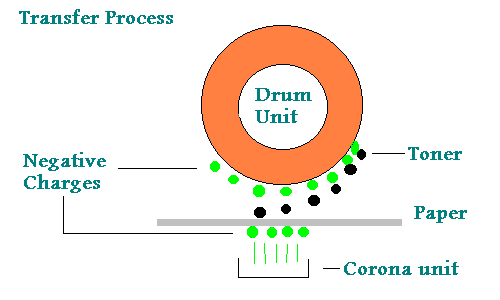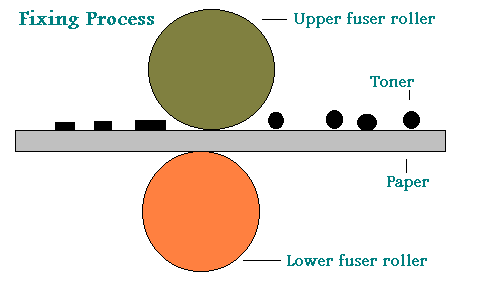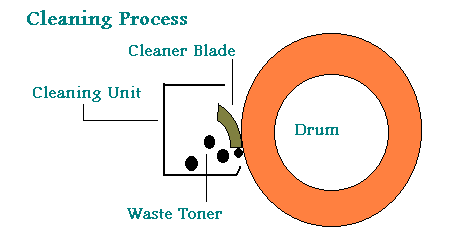|
Photocopier
Theory
 adapted with kind permission from a page composed by Randy Linscott (June 2001)The information presented here is specifically for Canon OPC copiers but most of the theory can be applied to any mono component copier.
Basic Copy Process
The Basic copy process
is made up of six steps:
Image Exposure Developing Transfer Fixing Cleaning
The drum is a tubular aluminum cylinder whose surface is coated with a photoconductive layer. What this means is that if light is reflected onto the drum surface then the conductive layer will change resistance. If the drum is exposed to light, then the surface will be conductive and the resistance will be low. If no light is exposed to the drum, then the surface is not conductive and the resistance is high. What is meant by "Charging" A metallic wire called a corona wire is stretched parallel to the drum and subjected to a high voltage. This causes a corona discharge to occur from the wire. The discharge exposes the drum surface with positive and negative charges.
During the Primary Charging phase a corona unit exposes the drum surface with a uniform negative potential. This causes the surface of the drum to have a negative potential. Positive charges occur in the base of the drum to balance the negative charges on the surface.
Reflection: The light from a lamp exposes an original and the light reflected from the original strikes the drum surface via a lens and mirrors. When light strikes a black color on the original the light is absorbed and not reflected back to the drum. When the light strikes a white area the light is reflected back to the drum. When light strikes other colors or grays the intensity of the light reflected back to the drum varies. Photoresistance: When light strikes the photosensitive drum the resistance of the drum surface is lowered and becomes conductive which allows the positive and negative charges in those lighted areas to cancel out. The area where the light did not hit the drum, negative charges remain on the surface. At this point in the process there is an electrostatic image on the drum.
As the drum turns the electrostatic image passes the developer unit which contains positively charged toner particles. Where there is a negative charge on the drum the positive charged toner particle will attract to it. This now forms a visible image on the drum surface.
The transfer stage is performed by another negatively charged corona unit. The corona subjects the back side of the paper to a very strong negative charge which causes the positive toner to attract to the paper. At this point the image is now on the paper and is held there by static charges.
The fixing stage is typically done by running the paper threw to heated pressure rollers thereby melting the toner and pressing it into the paper fibers. The image is now permanent on the paper.
Drum cleaning is done by a mylar blade that rest on the drum surface. As the drum rotates the excess toner that was left on the drum is cleaned off. The amount of excess toner is based on the design of the machine. Most copiers today have at least 90% toner transfer to the paper. |
Follow me...
|


